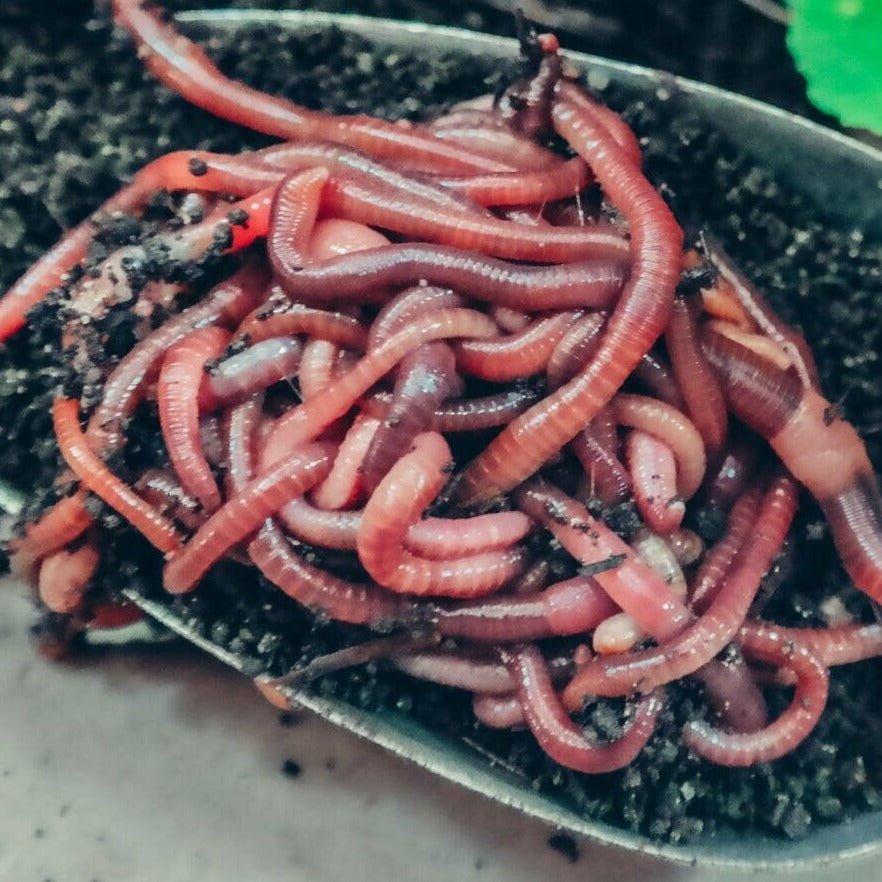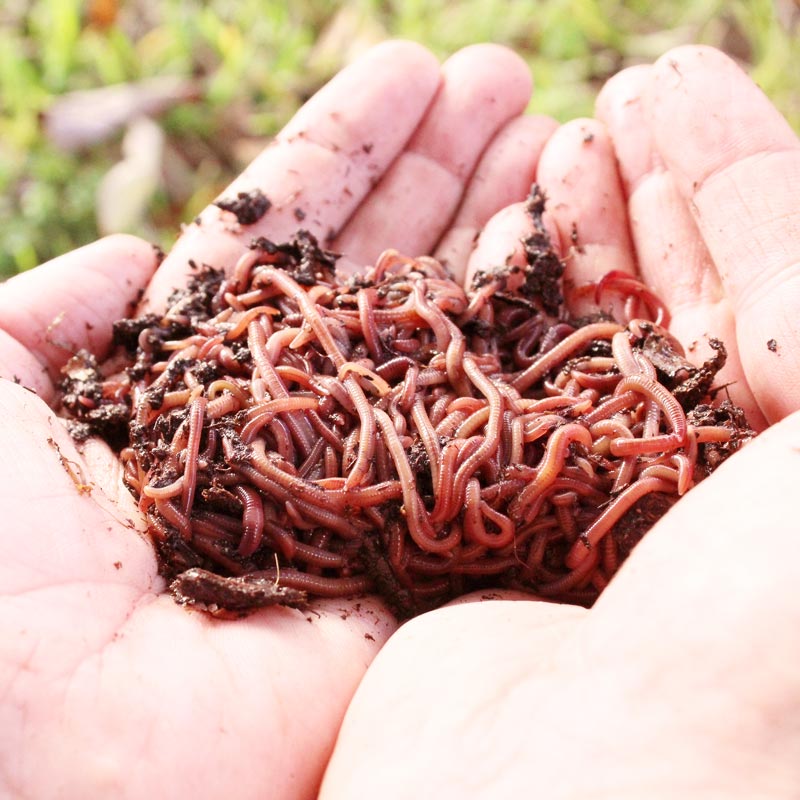Red Wiggler Worms - Efficient Decomposers for Your Compost Bin
Red Wiggler Worms - Efficient Decomposers for Your Compost Bin
Blog Article
Optimizing the Perks of Red Wiggler Worms: A Comprehensive Handbook for Home Gardeners and Urban Farmers
In the world of lasting gardening techniques, red wiggler worms stand as unhonored heroes, quietly transforming organic waste right into nutrient-rich castings that can function wonders for dirt health. By exploring the intricacies of how to efficiently care for and maximize the advantages of red wiggler worms, individuals can open a riches of opportunities for enhancing the sustainability and performance of their horticulture endeavors.
Recognizing Red Wiggler Worms
Red Wiggler worms, renowned for their efficient composting capacities, are a varieties of earthworms extensively utilized in vermiculture techniques. These worms, clinically recognized as Eisenia fetida, prosper in rotting natural material, making them optimal prospects for composting.
One key characteristic of Red Wiggler worms is their reproductive rate. These hermaphroditic creatures possess both women and male reproductive organs, enabling them to duplicate swiftly under positive conditions. A mature Red Wiggler can generate several offspring in a brief duration, making certain a steady populace within a composting system.

Establishing a Worm Bin
When establishing a worm bin for vermiculture functions, appropriate prep work and focus to detail are important for producing a helpful setting for Red Wiggler worms. Begin by picking an appropriate container for your worm bin. This can be a plastic or wood container with a lid to preserve moisture degrees and safeguard the worms from light. Guarantee that the container has drain openings at the base to avoid waterlogging.

Area the worm container in a great, dark area away from straight sunshine and severe temperatures. By following these steps, you can establish up a flourishing worm container that will effectively refine natural waste into nutrient-rich vermicompost for your garden.
Feeding and Maintaining Worms
Ensuring a nutritious and balanced diet regimen is crucial for the health and productivity of Red Wiggler worms in a vermiculture system. Red Wigglers are ravenous eaters, efficient in consuming their own body weight in organic matter daily. To keep a growing worm population, it is vital to supply them with a range of food scraps such as fruit and vegetable peels, coffee grounds, tea bags, and smashed eggshells. However, it is crucial to prevent feeding them citrus fruits, onions, garlic, dairy products, meat, browse this site and oily foods as these can be unsafe to the worms or trigger undesirable smells in the container.
Appropriate moisture levels are likewise important for the health of Red Wiggler worms. The bed linen must really feel like a damp sponge, offering enough moisture for the worms to breathe with their skin. Consistently examine the wetness levels and readjust by adding water or dry bed linen material as required. Additionally, preserving proper temperature problems in pop over to these guys between 55-77 ° F(13-25 ° C )will make sure ideal worm task and recreation. By vigilantly monitoring their diet, moisture, and environmental problems, home garden enthusiasts and metropolitan farmers can sustain a efficient and healthy Red Wiggler worm population for composting objectives.
Collecting Worm Spreadings
To efficiently remove nutrient-rich worm castings from the vermicompost, a systematic harvesting procedure is necessary for optimizing the composting benefits. The very first action in gathering worm spreadings is to urge the worms to move to one side of the bin.
After the spreadings have actually been collected, it is essential to separate any kind of continuing to be worms from the castings to avoid damaging them during storage space or application. One reliable technique is to develop conical stacks of castings under brilliant light. Worms will instinctively relocate away from the light, enabling easy splitting up and removal.
Last but not least, the harvested worm castings ought to be saved in an awesome, dark, and dry location to maintain their top quality and performance as a nutrient-rich dirt modification. By adhering to these actions, home gardeners and urban farmers can make best use of the advantages of red wiggler worms in their vermicomposting systems.
Utilizing Worm Castings in Gardening
The unification of nutrient-rich worm castings right into yard dirt can considerably improve plant development and total soil health. Worm spreadings, additionally referred to as vermicast, are a natural plant food created by red wiggler worms as they damage down natural matter. These castings are rich in vital nutrients like nitrogen, phosphorus, potassium, and valuable germs that promote plant growth and enhance dirt framework.
When utilizing worm castings in horticulture, it is necessary to mix them thoroughly into the dirt or utilize them as a top dressing around plants. Discover More Here The slow-release nature of worm castings guarantees a stable supply of nutrients to plants over time, decreasing the risk of nutrient leaching and advertising long-term dirt fertility. In addition, worm spreadings aid enhance soil oygenation, water retention, and microbial task, developing a healthy and balanced atmosphere for plant origins to thrive.

Verdict
In conclusion, the utilization of red wiggler worms in home horticulture and city farming can significantly benefit soil wellness and plant growth. By understanding just how to set up and keep a worm bin, feed the worms correctly, and gather their nutrient-rich spreadings, garden enthusiasts can maximize the advantages of these earthworms.
In the world of sustainable horticulture techniques, red wiggler worms stand as unsung heroes, quietly transforming natural waste into nutrient-rich castings that can work wonders for soil health and wellness.When developing a worm container for vermiculture functions, correct prep work and interest to information are crucial for developing a favorable environment for Red Wiggler worms. The first action in gathering worm spreadings is to encourage the worms to migrate to one side of the bin. Worm castings, also understood as vermicast, are a natural plant food generated by red wiggler worms as they damage down natural matter. By understanding exactly how to set up and maintain a worm container, feed the worms properly, and harvest their nutrient-rich spreadings, gardeners can maximize the benefits of these earthworms.
Report this page